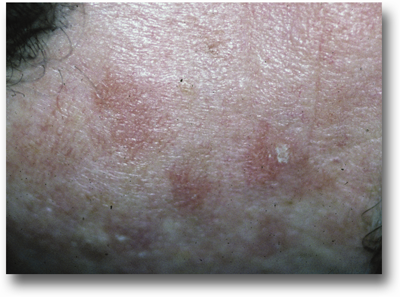Skin Cancer Detection and Prevention
Common Skin Cancer Areas
Squamous cell carcinomas and actinic keratoses most often appear on parts of the body that have sustained chronic sun exposure over many years areas such as:

- The Bald Scalp
- Face
- Ears
- Lips
- Backs of Hands and Forearms
- Shoulders and Neck
Sunscreen 101
 Make sunscreen part of your morning schedule by applying it a half hour before leaving your home, every single day.
Make sunscreen part of your morning schedule by applying it a half hour before leaving your home, every single day.
For total body coverage, slather on a full ounce (2 tablespoons) of sunscreen. Reapply every two hours or after swimming or sweating heavily.
In addition to an SPF of 15 or higher, look for UVA-blocking ingredients like titanium dioxide, zinc oxide, avobenzone, oxybenzone or Mexoryl SX. For maximum effect make sure your sunscreen blocks both UVA and UVB rays as both kinds of ultraviolet radiation are dangerous and damage your skin!
Dressing the Part – Cover up with clothing to prevent skin cancer!
 Bright- or dark-colored, densely woven fabrics provide more defense from UV rays than light- or pastel-colored, loosely woven materials. Blue jeans, for example, provide excellent protection, with an SPF of approximately 1700.
Bright- or dark-colored, densely woven fabrics provide more defense from UV rays than light- or pastel-colored, loosely woven materials. Blue jeans, for example, provide excellent protection, with an SPF of approximately 1700.
A long-sleeved shirt, broad-brimmed hat and UV-blocking sunglasses will complete your outfit.
Young Skin is Sensitive Skin – Protect Babies and young children from the sun!
 Just one blistering sunburn in childhood can double a person’s lifetime chances of developing melanoma, the deadliest skin cancer. Use sunscreen on babies 6 months and older. From birth to six months, keep newborns out of direct sunlight and shielded by an umbrella or stroller hood, as well as with sun-protective clothing, such as bonnets and sunglasses.
Just one blistering sunburn in childhood can double a person’s lifetime chances of developing melanoma, the deadliest skin cancer. Use sunscreen on babies 6 months and older. From birth to six months, keep newborns out of direct sunlight and shielded by an umbrella or stroller hood, as well as with sun-protective clothing, such as bonnets and sunglasses.
How to Perform a Skin Cancer Detection Self-Exam
The Skin Cancer Foundation recommends monthly skin self-exams. Here is how to perform a skin cancer detection self-exam:
- In a full length mirror, inspect your skin from head to foot
- Use a blow dryer to check your scalp. With your back to the mirror, use a hand mirror to check your back and other hard-to-see places
- Don’t forget to examine the hands, soles of feet and genitals
- Make note of any unusual or new growths or moles
- See your doctor immediately if you have any concerns, and at least once a year for a complete skin check-up.



